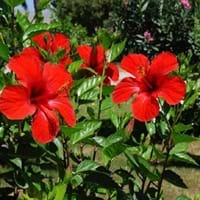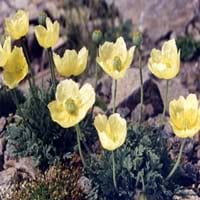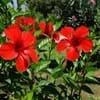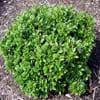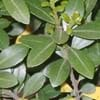Life Span
Annual and Perennial
Perennial
Type
Broadleaf Evergreen
Perennial
Origin
China
Russia/Siberia, Japan
Types
Not Available
Not Available
Number of Varieties
Not Available
Habitat
gardens, Grassland, Homesteads, Subtropical climates, tropical environments
Alpine Meadows, Rocky areas
USDA Hardiness Zone
9-15
5-7
AHS Heat Zone
Not Available
7-4
Sunset Zone
21,22
3a, 3b, 4, 5, 6, 7, 8, 9, 14, 15, 16, 17
Habit
Oval or Rounded
Clump-Forming
Flower Color
Yellow, Red, Dark Red
Light Yellow, Yellow green
Flower Color Modifier
Bicolor
Bicolor
Fruit Color
Not Available
Not Available
Leaf Color in Spring
Dark Green
Gray Green
Leaf Color in Summer
Dark Green
Gray Green
Leaf Color in Fall
Dark Green
Gray Green
Leaf Color in Winter
Dark Green
Not Available
Plant Season
Spring, Summer, Fall, Winter
Summer
Sunlight
Full Sun, Partial Sun
Full Sun, Partial Sun
The pH of Soil
Neutral
Acidic, Neutral, Alkaline
Soil Drainage
Well drained
Well drained
Bloom Time
Early Summer, Summer, Late Summer, Early Fall, Fall, Indeterminate
Early Summer, Summer
Tolerances
Drought, Variety of soil types
Drought
Where to Plant?
Ground, Pot
Ground
How to Plant?
Stem Cutting, Tip cutting, Vegetative Reproduction
Seedlings
Plant Maintenance
Medium
Medium
Watering Requirements
It cannot sustain wet-feet, Keep the Soil well drained, Requires watering in the growing season, Water Deeply, Water frequently while growing, Water more in summer, Water when soil is dry
Average Water Needs, Never Over-water
In Summer
Lots of watering
Lots of watering
In Spring
Moderate
Moderate
In Winter
Average Water
Average Water
Soil pH
Neutral
Acidic, Neutral, Alkaline
Soil Drainage Capacity
Well drained
Well drained
Sun Exposure
Full Sun, Partial Sun
Full Sun, Partial Sun
Pruning
A hard prune may be necessary if the plant becomes woody, Cut leaves after fall, Cut or pinch the stems, Pinch or prune as they grow to promote branching and bushiness, Prune for shortening long shoots, Prune in early summer, Remove deadheads
Cut or pinch the stems, Remove damaged leaves, Remove dead branches, Remove dead leaves
Fertilizers
Apply 10-10-10 amount, Balanced liquid fertilizer, Do not fertilize new plants until at least a month, Use a low phosphate fertilizer to improve the quality of the blooms
All-Purpose Liquid Fertilizer, as it is a flowering plant, use high phosphorous content fertilizer, Water soluble fertilizers
Pests and Diseases
Aphids, Mealybugs, Red spider mite, Scale, Thripes, Whiteflies
Not Available, Red blotch
Plant Tolerance
Drought, Variety of soil types
Drought
Flower Petal Number
Single
Single
Foliage Texture
Medium
Fine
Foliage Sheen
Glossy
Matte
Attracts
Bees, Butterflies, Hummingbirds
Not Available
Allergy
no allergic reactions
Not Available
Aesthetic Uses
Beautification, Borders, Landscape Designing
Beautification, Showy Purposes
Beauty Benefits
Hair Conditioner, Not Available, Prevents greying of hair, Prevents Premature Baldness, Promotes Healthy Hair, Promotes healthy skin, Speed hair growth
Not Available
Environmental Uses
Air purification
Air purification
Medicinal Uses
anti-inflammatory, Diuretic, Hair Loss, High blood pressure, Vitamin C
Not Available
Part of Plant Used
Flowers, Leaf Stalks, Leaves
Not Available
Other Uses
Culinary use, Employed in herbal medicine, Jam, Jelly, Making Shampoo, Oil is used for aromatherapy, Oil is used in perfume, soaps, creams, etc., Showy Purposes, Traditional medicine, Use in Chinese herbology, Used As Food, Used as Ornamental plant, Used for bedding in gardens, Used for fragrance, Used for its medicinal properties, Used in making beverages, Used in paper industry, Used in salads, Used to make hair tonic
Not Available
Used As Indoor Plant
No
Yes
Used As Outdoor Plant
Yes
Yes
Garden Design
Container, Foundation, Houseplant, Mixed Border, Tropical
Alpine, Edging, Mixed Border, Rock Garden / Wall
Botanical Name
HIBISCUS rosa-sinensis 'Lillikoi Yellow'
PAPAVER miyabeanum
Common Name
China rose
Japanese Poppy
In Hindi
गुड़हल, जवा कुसुम
Japanese Poppy
In German
Tropical Hibiscus
japanische Poppy
In French
Hibiscus Tropical
Poppy japonaise
In Spanish
hibisco tropical
amapola japonesa
In Greek
τροπική Hibiscus
Ιαπωνικά παπαρούνας
In Portuguese
Hibiscus tropical
Poppy japonês
In Polish
Tropical Hibiscus
japoński Poppy
In Latin
Tropical Hibiscus
Papaver Italica
Phylum
Magnoliophyta
Tracheophyta
Class
Magnoliopsida
Magnoliopsida
Order
Malvales
Ranunculales
Family
Malvaceae
Papaveraceae
Clade
Angiosperms, Eudicots, Rosids
Angiosperms, Eudicots
Subfamily
Malvoideae
Paperveroideae
Season and Care of Chinese hibiscus and Japanese Poppy
Season and care of Chinese hibiscus and Japanese Poppy is important to know. While considering everything about Chinese hibiscus and Japanese Poppy Care, growing season is an essential factor. Chinese hibiscus season is Spring, Summer, Fall and Winter and Japanese Poppy season is Spring, Summer, Fall and Winter. The type of soil for Chinese hibiscus is Loam and for Japanese Poppy is Loam while the PH of soil for Chinese hibiscus is Neutral and for Japanese Poppy is Acidic, Neutral, Alkaline.
Chinese hibiscus and Japanese Poppy Physical Information
Chinese hibiscus and Japanese Poppy physical information is very important for comparison. Chinese hibiscus height is 600.00 cm and width 60.00 cm whereas Japanese Poppy height is 10.20 cm and width 10.20 cm. The color specification of Chinese hibiscus and Japanese Poppy are as follows:
Chinese hibiscus flower color: Yellow, Red and Dark Red
Chinese hibiscus leaf color: Dark Green
Japanese Poppy flower color: Light Yellow and Yellow green
- Japanese Poppy leaf color: Gray Green
Care of Chinese hibiscus and Japanese Poppy
Care of Chinese hibiscus and Japanese Poppy include pruning, fertilizers, watering etc. Chinese hibiscus pruning is done A hard prune may be necessary if the plant becomes woody, Cut leaves after fall, Cut or pinch the stems, Pinch or prune as they grow to promote branching and bushiness, Prune for shortening long shoots, Prune in early summer and Remove deadheads and Japanese Poppy pruning is done Cut or pinch the stems, Remove damaged leaves, Remove dead branches and Remove dead leaves. In summer Chinese hibiscus needs Lots of watering and in winter, it needs Average Water. Whereas, in summer Japanese Poppy needs Lots of watering and in winter, it needs Average Water.
